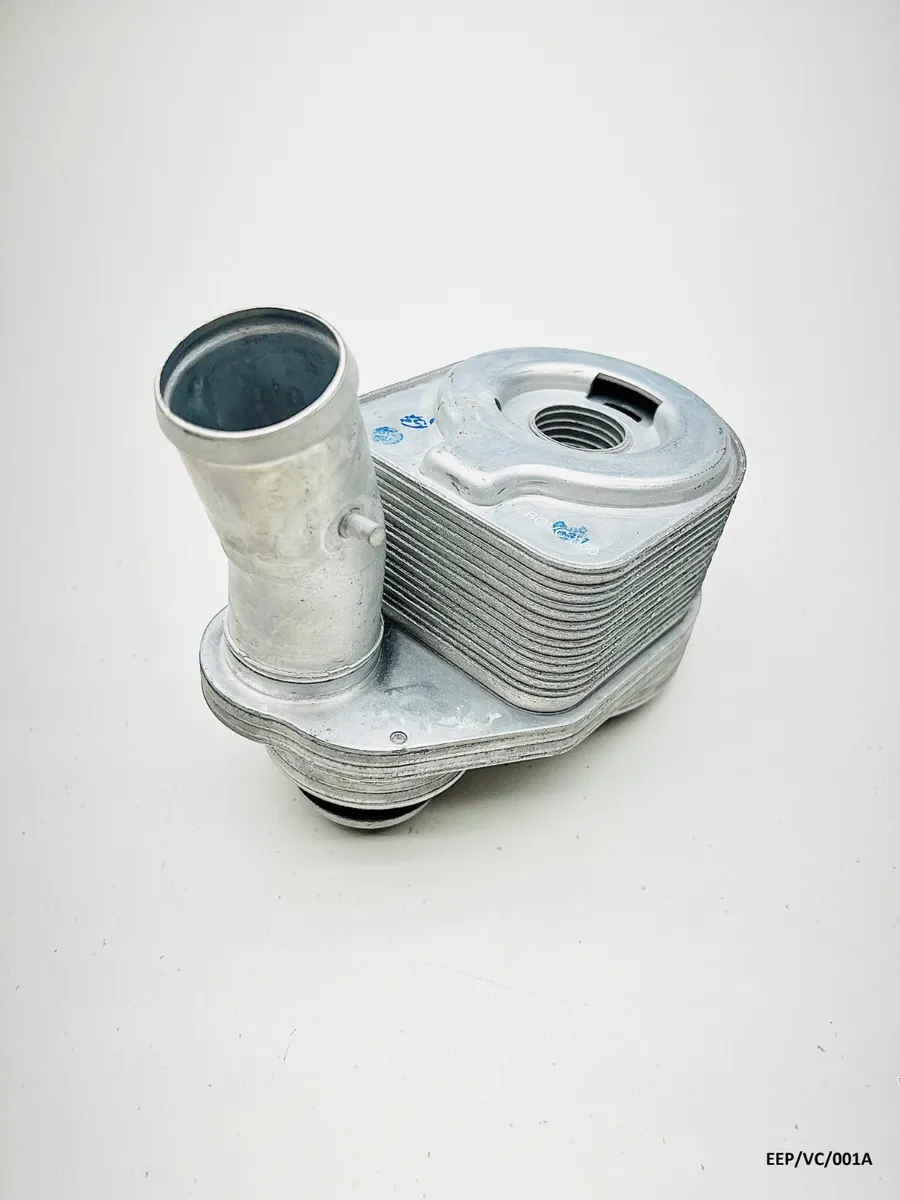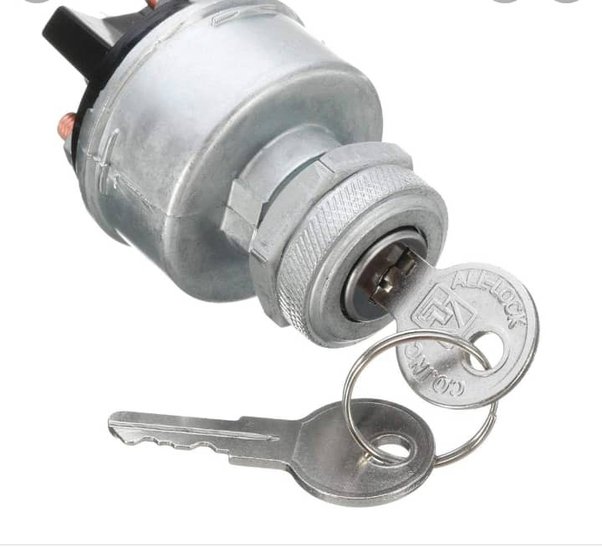Can a Bad Oil Cooler Cause Water in Oil
Yes, a faulty oil cooler can cause water to mix with oil. This mixing often leads to a milky, mayonnaise-like engine oil appearance.
A bad oil cooler can spell trouble for your engine’s health and longevity. The oil cooler’s main job is to regulate the temperature of the engine oil, but when it fails, coolant can leak into the oil system, contaminating the lubricant.
This can create a disastrous situation for your engine, as water in oil hampers its lubrication qualities. Car owners should be vigilant about maintaining their vehicle’s oil cooler to prevent such issues. Recognizing the signs of oil contamination early will protect your engine from serious damage and potentially costly repairs. Regular checks of oil condition and cooler integrity can save time, money, and extend the life of your engine.

Credit: www.reddit.com
Signs Of Water Contamination In Engine Oil
Recognizing the signs of water contamination in engine oil is essential for maintaining the health of your vehicle’s engine. Water can find its way into the engine oil through a failing oil cooler, among other causes. This contamination can lead to serious engine problems if not addressed promptly. Stay attentive to the following indicators to prevent engine damage.
Milky Appearance
When water mixes with engine oil, it creates a milky or cloudy appearance. This is visible on the oil dipstick or under the oil filler cap. The presence of a light brown, milky substance is a clear sign of water in the oil. This calls for immediate attention as it can compromise engine functionality.
Engine Performance Issues
Water contamination could also manifest in engine performance issues. Symptoms include:
- Power loss – Engine struggles to deliver full power.
- Unusual noises – Sputtering or knocking sounds arise.
- Erratic temperature readings – Fluctuations in engine temperature.
- Rough idling – The engine runs unevenly when stationary.
These symptoms can indicate water has compromised the oil’s lubricating properties, leading to increased friction and, consequently, more significant engine wear and performance problems.
The Role Of An Oil Cooler In Engine Health
An engine’s oil cooler is a guardian of sorts. It shields the engine from harm. This cooler works hard. It keeps oil cool. Cool oil means a healthy, happy engine. Let’s delve into why the oil cooler is so vital.
Temperature Regulation
The oil cooler acts like an engine’s personal thermostat. Engines get hot. Really hot. The oil cooler steps in to maintain a safe temperature. Think of it as an engine’s personal cooling fan.
Key points of Temperature Regulation:
- Keeps engine oil cool – Ensures longevity and performance
- Protects engine components – Prevents overheating and wear
- Stabilizes oil viscosity – Oil stays effective even in high heat
Preventing Fluid Mixture
The oil cooler is crucial for keeping oil and coolant separate. When these two mix, it’s trouble. Water in oil spells disaster for an engine. The oil cooler helps prevent this nightmare.
How the Oil Cooler Prevents Fluid Mixture:
- Acts as a barrier – Keeps oil and coolant in their places
- Maintains integrity – Ensures gaskets and seals stay strong
- Detects issues early – A failing oil cooler can lead to early signs of contamination
Mechanics Of Oil Cooler Failure
Understanding why oil coolers fail demands a close look at the inner workings. Oil coolers regulate engine temperature by using coolant. If they break, water may mix with oil. This is bad news for engines. Below are key failure points in oil coolers.
Seal Deterioration
Oil coolers rely on seals to keep fluids separate. Over time, these seals can weaken. Heat, pressure, and chemical reactions wear them down.
- Gaskets and rubber sealants crack or become brittle.
- Leaking coolant enters the oil system.
Regular check-ups catch these issues early. Mechanics spot failing seals and replace them to prevent water in the oil.
Internal Corrosion
Corrosion inside the oil cooler is a sneaky culprit. It starts with chemical reactions between different metals and coolants.
- Coolant becomes acidic over time.
- Acid eats away metal, creating small holes.
- Holes allow coolant and oil to mix.
Antifreeze quality matters. Good coolant slows down corrosion. Changing coolant on schedule is critical.

Credit: www.yourmechanic.com
Troubleshooting Water Presence In Oil
Finding water in your vehicle’s oil can be alarming. It often points to a significant issue within the engine. An oil cooler failing can indeed allow coolant to mix with oil. This can cause engine damage if not addressed quickly. Identifying the source is critical. Effective troubleshooting involves several diagnostic tests and a thorough inspection. Let’s delve into how you can diagnose and identify the root cause of water in your oil.
Diagnostic Tests
Commence with diagnostic tests to understand the presence of water in your engine’s oil. These are the key steps:
- Perform an oil analysis to check for contamination.
- Use a coolant system pressure tester to identify leaks.
- Check for white smoke from exhaust, which indicates coolant burn-off.
An oil analysis will determine if the liquid found in the oil is indeed water or coolant. The pressure test will reveal any breaches within the oil cooler or the engine’s system.
Visual Inspection Of Oil Cooler
Physically inspect the oil cooler for signs of damage:
- Check for cracks or visible damage on the oil cooler.
- Inspect seals and gaskets for degradation.
- Look for oil in coolant or coolant in oil, a tell-tale sign of cross-contamination.
Visually assessing the oil cooler is essential. Damage or worn-out seals can lead to intermixing of fluids. Spotting discoloration or an emulsified substance within the oil or coolant can confirm a failing oil cooler.
Take immediate action if you detect these signs. Left unchecked, water in oil can compromise engine integrity and lead to expensive repairs.
Addressing Oil Cooler Malfunctions
When an oil cooler fails, it’s often a distress call for your engine. This critical component separates oil and coolant to maintain optimal operating temperatures. A malfunctioning oil cooler can leak coolant into the oil system. This spells trouble, risking severe engine damage with the unwelcome mix. Swiftly diagnosing and rectifying the issue can save expensive repairs. Keeping an eye for milky oil or coolant loss is key to early detection.
Identify the signs early to prevent engine wear. Immediate action is necessary upon discovering water in the oil. Let’s explore the essential steps to take when dealing with a faulty oil cooler.
Repair Or Replace
Determining whether to repair or replace a damaged oil cooler is crucial. Some oil cooler issues might need simple fixes such as replacing gaskets or tightening connections. Assessing the extent of damage guides this decision. An expert can help decide the best course.
- Inspect for noticeable cracks or leaks
- Check for contaminated oil-coolant mix
- Evaluate cooler lines and fittings
In cases where the cooler is extensively damaged, replacement is the best option.
Methods To Flush Contaminated Oil
Addressing water in your oil means thoroughly flushing the system. This involves several steps:
- Drain the contaminated oil
- Remove the oil filter
- Clean the oil pan
- Flush the engine with a cleaning solution
- Refill with fresh oil
- Install a new oil filter
A successful flush removes all traces of contamination. Prioritizing a thorough cleanse ensures engine safety and restores the oil system integrity. Consult a professional mechanic for the best results.
Preventative Measures And Regular Maintenance
Regular maintenance is key to keeping your engine healthy. A well-maintained oil cooler can prevent water from contaminating your oil, a serious issue that can cause engine damage. Let’s explore the steps to ensure your vehicle stays in peak condition.
Routine Checkups
Consistent inspections are vital for a robust oil cooler system. Check the cooler for cracks or leaks every oil change. Look out for oil in the coolant or water in the oil, as these are telltale signs of a failing oil cooler. Replace any faulty seals or gaskets immediately to avoid water contamination.
- Monitor oil levels and condition often.
- Inspect cooler lines for signs of wear.
- Ensure the radiator cap seals properly.
Upgrading Cooling Systems
An upgraded cooling system enhances performance and protection. Advanced coolers with better heat dissipation prevent overheating. Install high-quality components for longer life spans. Consider a larger capacity cooler for high-demand scenarios.
| Component | Function | Upgrade Benefit |
|---|---|---|
| Oil Cooler | Reduces oil temperature | Better heat management |
| Cooling Lines | Transport oil to/from cooler | Durability under stress |
| Radiator Cap | Maintains cooling system pressure | Improved sealing |
Avoiding overheating is crucial — it maintains oil integrity and prevents water intrusion. Follow these guidelines to help keep your oil purer for longer.

Credit: www.carparts.com
Frequently Asked Questions On Can A Bad Oil Cooler Cause Water In Oil
Can A Faulty Oil Cooler Lead To Coolant In The Oil?
Yes, a bad oil cooler can cause coolant to mix with the oil. This happens when the cooler’s internal seals fail, allowing engine coolant to seep into the oil system, contaminating it.
What Are Symptoms Of A Bad Oil Cooler?
Common symptoms include oil in the coolant reservoir, engine overheating, and white, milky oil, which indicates water contamination. You might also notice poor engine performance and excessive coolant loss without visible leaks.
How Does Water Get In Engine Oil?
Water can enter engine oil through a faulty oil cooler, blown head gasket, or condensation within the engine. These issues allow coolant or moisture to mix with the engine oil, leading to contamination.
What Happens If Water Mixes With Engine Oil?
If water mixes with engine oil, it can lead to a milky appearance and reduced lubrication properties. This can cause increased engine wear, potential overheating, and in severe cases, engine failure.
Conclusion
Understanding the role of an oil cooler is crucial for maintaining engine health. A faulty one risks water contamination in oil, significantly impairing engine performance. Early detection and intervention can prevent costly repairs. Always consult with a professional if you suspect an oil cooler issue to safeguard your engine’s longevity.



